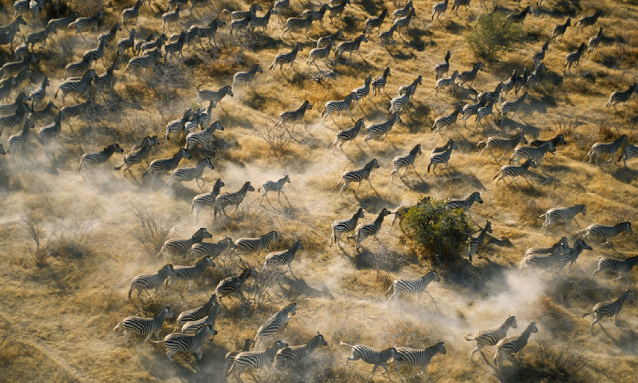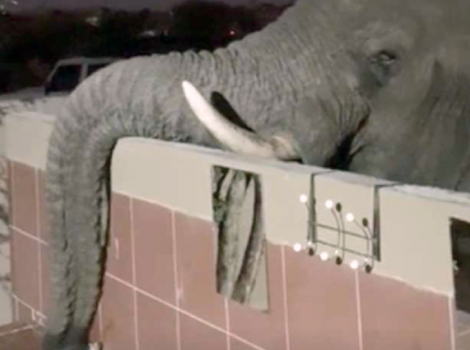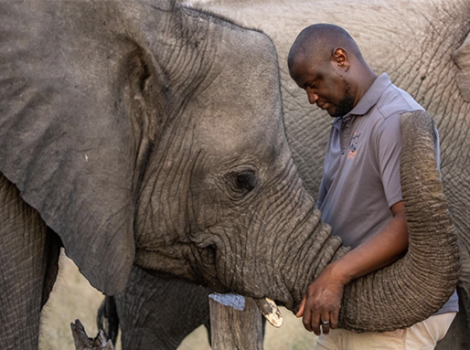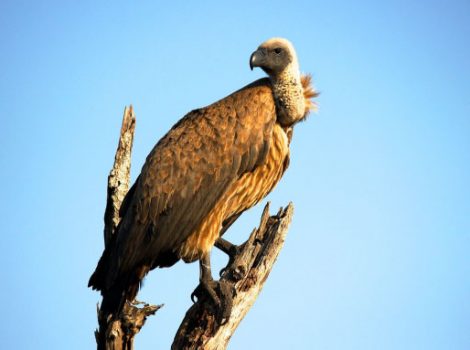
When thinking of animal migrations in Africa, the first thing that springs to mind is the wildebeest migration in the Serengeti and the Masai Mara. And although this event is a phenomenal bucket-list experience, there are many other migrations that are worth experiencing in Africa.
One of these is the zebra migration in northern Botswana. The annual November-to-March migration of zebra in northern Botswana is the longest and one of the most stunning migrations on the continent, stretching 311 miles from the Chobe River floodplains to the grassy plains of the Nxai Pan and back again.
This migration was “discovered” in 2014 by a team of scientists.
“The distance covered by these zebras was a total shock to all of us involved in the study, as well as to people familiar with wildlife conservation in the region,” said Robin Naidoo, senior conservation scientist at the World Wildlife Fund.
“Nobody knew that something of this scale, with this much ground covered, was occurring.”
Attracting wildlife watchers from all over the world, the migration proceeds in three massive movements one way and three movements back. The distinctive black-and-white-striped zebras know just where to go, spurred by heredity to follow the same migration patterns as those before them, occasionally with adaptations to get around impediments such as buffalo fences. The three movements include:
Chobe Enclave-Linyanti Reserve-Savuti Marsh (November-December): With the start of the migration dependent on rains, zebras follow grasses from the moist floodplains of the Chobe River, passing villages on the outskirts of the Chobe Enclave as they make their way to desert through marsh and plains to dry, mopane woodlands and finally across a large stretch of the deep Kalahari Sandveld dotted with waterholes.
Savuti Marsh-Mababe Depression (end of December-January): Here the herd heads to Savuti and the hardest part of the journey toward the desert. A permanent waterhole at the end of the Savuti River has pod-bearing trees necessary for the migration, helping the zebras and other species survive in the absence of other food sources. The zebras then continue south to natural waterholes and additional water points along the way.
Mababe Depression-Nxai Pan-Makgadikgadi (end of January-February): Sweet grasses reward zebras after their long and arduous journey, as they settle in for two months, often dropping their calves in the wet season or holding off for as long as four weeks, depending on the weather.
Where to watch the zebra migration
While these animals are on the move, the best way to witness their migration is from specific migration expedition camps. A beautiful location is the Migration Expeditions Camp from African Bush Camps (ABC), which is located amid the wilds of Nxai Pan National Park.
This camp features four Meru-style canvas tents offering space for up to two guests per tent. Each accommodation is elevated on a low deck and offers a shaded patio space. Solar-powered stations offer ready recharging for cameras and other devices. The main area of the camp consists of two canvas-covered hubs, with a cozy lounge area on one side and dining area with an open kitchen on the other. At the heart of the camp, travellers can gather at the fire circle to swap stories of their adventures on safari and learn about the wildlife, community and authentic culture around them from their ABC guides.
The local team and the ABC-trained guides at the Migration Expeditions Camp coordinate programming with plenty of opportunities for travellers to see and experience the zebra migration as well as other wildlife. Daily activities include morning and afternoon game drives in Nxai Pan, known as home to dark-maned Kalahari lions, elephants, wildebeest, giraffe, oryx, springbok, steenbok, cheetahs, jackals, spotted hyenas, leopards, wild dogs and brown hyenas.
Nxai Pan is also a highly desirable setting for bird-watching, with more than 200 bird species, many at their liveliest during the zebra migration.
The Migration Expeditions Camp welcomes guests age 16 and over for Zebra Migration Safaris from December to March, with access from Maun. The rate is $3,564 per person for a 6-night stay including accommodation, meals, tea, coffee, soft drinks and alcoholic beverages (except imported spirits and Champagne) and laundry. Morning & afternoon game drives and mokoro (dugout canoe) excursions (subject to water levels in the Khwai Area only) are also included, as are visits to the Baine’s Baobabs & the Khwai Village. All inter-camp flights and transfers are also included.
Source: https://www.travelweekly.com/Middle-East-Africa-Travel/Witness-the-zebra-migration-in-Botswana




thank you for the article